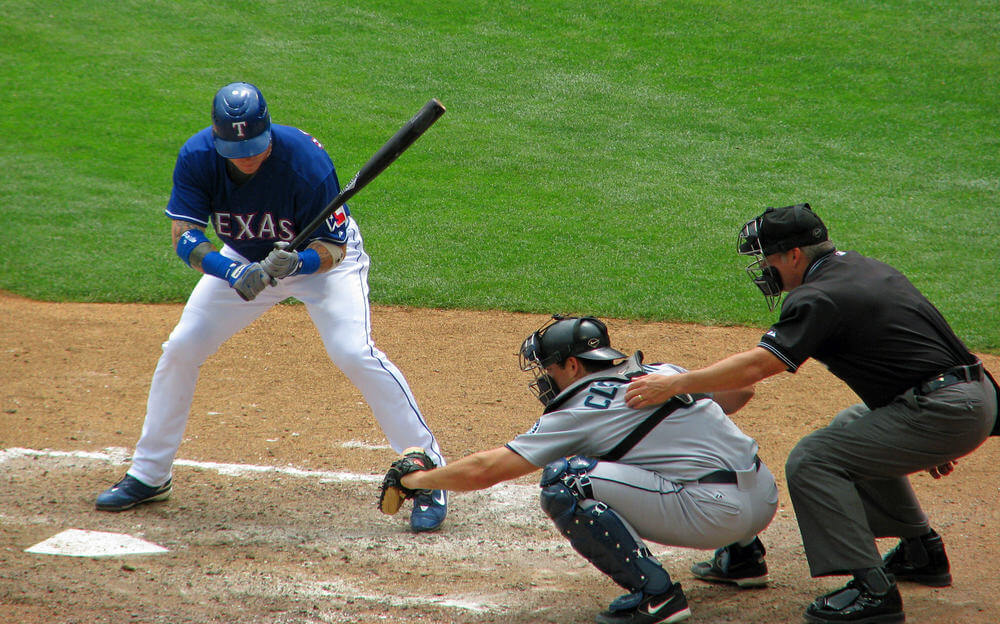Baseball is a game that is rich in traditions and unwritten rules. One of the actions that can sometimes be seen on the field is players drawing a line in the dirt. This seemingly simple act can have different meanings and implications depending on the context. In this article, we will explore what drawing a line in baseball means, the legality of this action, and the consequences it can have for players.
The Act of Drawing a Line

In baseball, drawing a line typically involves a batter using their bat to create a mark in the dirt. This mark can be made for various reasons. For some players, drawing a line serves as a point of reference or a reminder of where to position their feet in the batter’s box. It can be a part of their pre-pitch routine or a superstitious gesture.
However, drawing a line in baseball can also have a more contentious meaning. When a batter disagrees with an umpire’s strike call, they may draw a line in the dirt to indicate their belief that the pitch did not cross the plate within the strike zone. This act is often seen as an expression of frustration or protest against the umpire’s decision.
Is Drawing a Line in Baseball Illegal?
Strictly speaking, there is no explicit rule in the baseball rulebook that prohibits drawing a line in the dirt. However, the legality of this action is not determined by the rulebook itself, but rather by the interpretation and discretion of the umpire.
When a player draws a line in the dirt to contest a strike call, it is often viewed as a form of argumentation or showing up the umpire. Arguing balls and strikes is strictly forbidden in baseball, and umpires have the authority to eject players who engage in such behavior.
While drawing a line may not be explicitly mentioned as an ejectable offense, it falls under the broader category of disrespectful behavior towards the umpire. Umpires have the power to eject players who they believe are showing them up or disrespecting their authority. Therefore, the act of drawing a line in baseball can result in immediate ejection from the game.
Consequences of Drawing a Line

The consequences of drawing a line in baseball vary depending on the umpire’s interpretation and discretion. Some umpires may have a higher tolerance for player protests and may choose not to eject a player for drawing a line. Others may have a lower threshold and eject a player immediately.
The decision to eject a player for drawing a line is often influenced by factors such as the umpire’s temperament, past encounters with the player, and the perceived level of disrespect. If an umpire believes that the player’s actions were intended to show them up or argue the call, they are more likely to eject the player.
Drawing a line and getting ejected from the game can have significant consequences for both the player and their team. The player will be removed from the game, potentially disrupting the team’s lineup and strategies. It also reflects negatively on the player’s sportsmanship and can harm their reputation.
Alternatives to Drawing a Line
Instead of drawing a line in the dirt, players have alternative ways to express their disagreement with an umpire’s call. It is important to remember that arguing balls and strikes is not allowed, but respectful questioning or seeking clarification is acceptable. Players can politely ask the umpire about the location of the pitch or seek clarification on the strike call without showing disrespect.
Maintaining sportsmanship and professionalism on the field is crucial. Accepting the umpire’s decision, even if it is disagreed with, demonstrates respect for the game and the umpire’s authority. It is better to focus on the next play and contribute positively to the team’s performance rather than engaging in confrontations that can result in ejection.
Conclusion
Drawing a line in baseball can have different meanings depending on the context. While it can be a harmless gesture for personal reference or routine, drawing a line to contest a strike call is seen as disrespectful and can lead to ejection from the game. Umpires have the discretion to interpret the player’s actions and determine whether they are showing up the umpire or engaging in argumentation.
It is important for players to maintain sportsmanship and find alternative ways to express disagreement without disrespecting the umpire.








